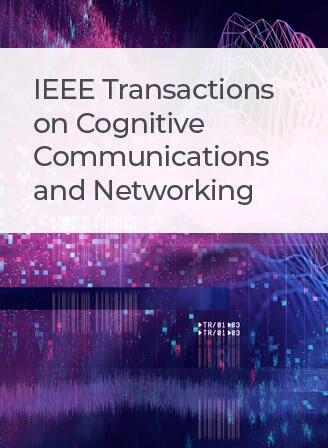Over-the-Air Modulation for RIS-Assisted Symbiotic Radios: Design, Analysis, and Optimization
IF 7.4
1区 计算机科学
Q1 TELECOMMUNICATIONS
IEEE Transactions on Cognitive Communications and Networking
Pub Date : 2024-08-06
DOI:10.1109/TCCN.2024.3439606
引用次数: 0
Abstract
In reconfigurable intelligent surface (RIS)-assisted symbiotic radio (SR), an RIS is exploited to assist the primary system and to simultaneously operate as a secondary transmitter by modulating its own information over the incident primary signal from the air. Such an operation is called over-the-air modulation. The existing modulation schemes such as on-off keying and binary phase-shift keying suffer from two problems for joint detection of the primary and secondary signals in RIS-assisted SR, i.e., one is the detection ambiguity problem when the direct link is blocked, and the other is the bit error rate (BER) error-floor problem when the direct link is weak. To address the two problems, we propose a novel modulation scheme by dividing the phase-shift matrix into two parts: one is the assistance beamforming matrix for assisting the primary system and the other is the transmission beamforming matrix for delivering the secondary signal. To optimize the assistance and transmission beamforming matrices, we first introduce an assistance factor that describes the performance requirement of the primary system and then formulate a problem to minimize the BER of the secondary system, while guaranteeing the BER requirement of the primary system controlled by the assistance factor. To solve this non-convex problem, we resort to the successive convex approximation technique to obtain a suboptimal solution. Furthermore, to draw more insights, we propose a low-complexity assistance-transmission beamforming structure by borrowing the idea from the classic maximum ratio transmission and zero forcing techniques. Finally, simulation results reveal an interesting tradeoff between the BER performance of the primary and secondary systems by adjusting the assistance factor.RIS 辅助共生无线电的空中调制:设计、分析和优化
在可重新配置的智能表面(RIS)辅助共生无线电(SR)中,RIS 被用来辅助主系统,并同时作为辅助发射机运行,将自身信息调制在从空中入射的主信号上。这种操作称为空中调制。现有的调制方案(如开关键控和二进制相移键控)在 RIS 辅助 SR 中联合检测主信号和副信号时存在两个问题,一个是直接链路受阻时的检测模糊性问题,另一个是直接链路较弱时的误码率(BER)误差下限问题。为解决这两个问题,我们提出了一种新的调制方案,将移相矩阵分为两部分:一部分是辅助波束成形矩阵,用于辅助主系统;另一部分是传输波束成形矩阵,用于传输辅助信号。为了优化辅助波束成形矩阵和传输波束成形矩阵,我们首先引入一个辅助系数来描述主系统的性能要求,然后提出一个问题,在保证由辅助系数控制的主系统误码率要求的前提下,最小化辅助系统的误码率。为了解决这个非凸问题,我们采用了连续凸近似技术来获得次优解。此外,为了获得更多启示,我们借鉴了经典的最大比传输和零强迫技术,提出了一种低复杂度的辅助传输波束成形结构。最后,仿真结果表明,通过调整辅助系数,可以在主系统和辅助系统的误码率性能之间做出有趣的权衡。
本文章由计算机程序翻译,如有差异,请以英文原文为准。
求助全文
约1分钟内获得全文
求助全文
来源期刊

IEEE Transactions on Cognitive Communications and Networking
Computer Science-Artificial Intelligence
CiteScore
15.50
自引率
7.00%
发文量
108
期刊介绍:
The IEEE Transactions on Cognitive Communications and Networking (TCCN) aims to publish high-quality manuscripts that push the boundaries of cognitive communications and networking research. Cognitive, in this context, refers to the application of perception, learning, reasoning, memory, and adaptive approaches in communication system design. The transactions welcome submissions that explore various aspects of cognitive communications and networks, focusing on innovative and holistic approaches to complex system design. Key topics covered include architecture, protocols, cross-layer design, and cognition cycle design for cognitive networks. Additionally, research on machine learning, artificial intelligence, end-to-end and distributed intelligence, software-defined networking, cognitive radios, spectrum sharing, and security and privacy issues in cognitive networks are of interest. The publication also encourages papers addressing novel services and applications enabled by these cognitive concepts.
 求助内容:
求助内容: 应助结果提醒方式:
应助结果提醒方式:


